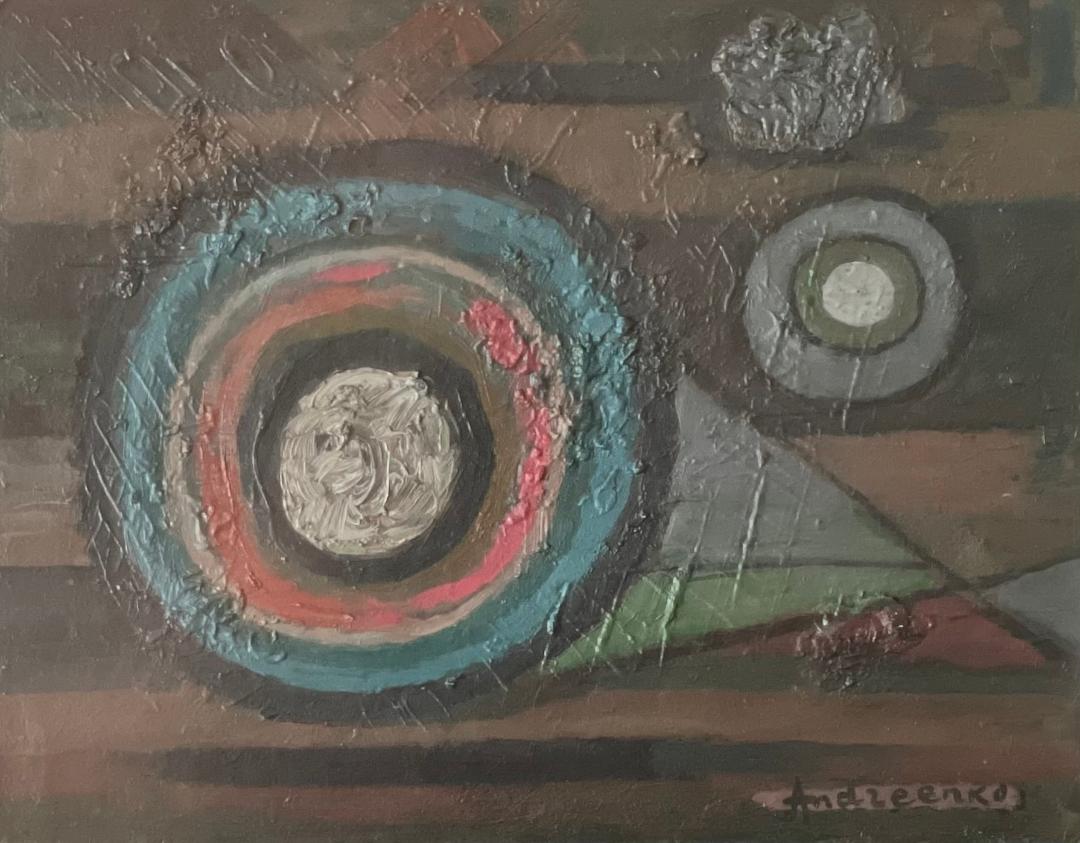
Michel Andreenko (also known as Mykhailo Andreenko –Nechytailo) was born in Odesa, Ukraine in 1894. In 1912–17 Andreenko studied at the art school of the Society for the Promotion of the Arts in Saint Petersburg, together with N. Rerikh, A. Rylov, and I. Bilibin. In 1914–16 he exhibited the composition Black Dome and his first cubist works in Saint Petersburg. In 1914 he participated in an international graphics exhibition in Leipzig. From 1917–24 he devoted most of his time to designing stage sets for various theaters—in Saint Petersburg, Odesa, Prague, Paris, and for the Royal Opera in Bucharest. The artist moved to Paris in 1923. In Paris worked on sets for films Casanova and Sheherazade and continued to paint in the cubist-constructivist style. (Composition, 1924, Construction, 1924, A Person, 1926) In the 1930s Andreenko produced a series of surrealist paintings (A Fair Stall, 1933). He switched to neorealism in the 1940s and painted a number of portraits as well as a series the cityscapes Disappearing Paris (Rue Carpeaux,1946, Rue Paul Barruel, 1954, Rue Cambronne, 1954, and Paysage du Cycle, 1956). From 1958 he returned to constructivism and abstraction. Andreenko`s work is characterized by a precision of composition that harmonizes subtly with color. His stage sets are remarkable for their laconic quality and architectural schematism, and his costume designs, for their richness. His paintings can be found in the City Museum of Modern Art and the Arsenal Library in Paris, the National Library in Vienna, the Victoria and Albert Museum in London, the Metropolitan Museum in New York, and the National Museum in Lviv. He died in 1982 in Paris.

